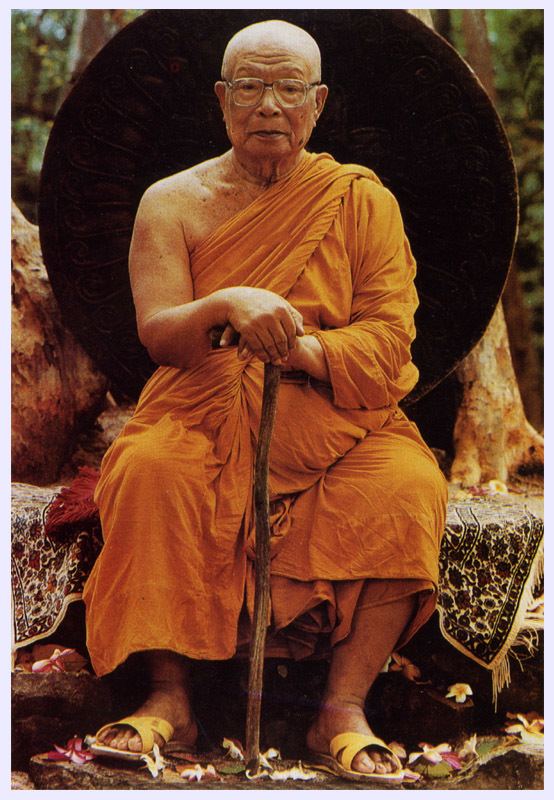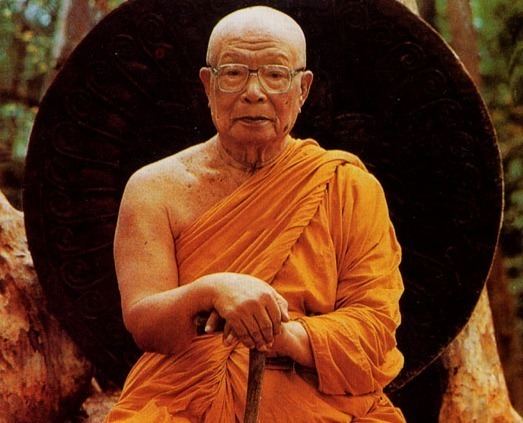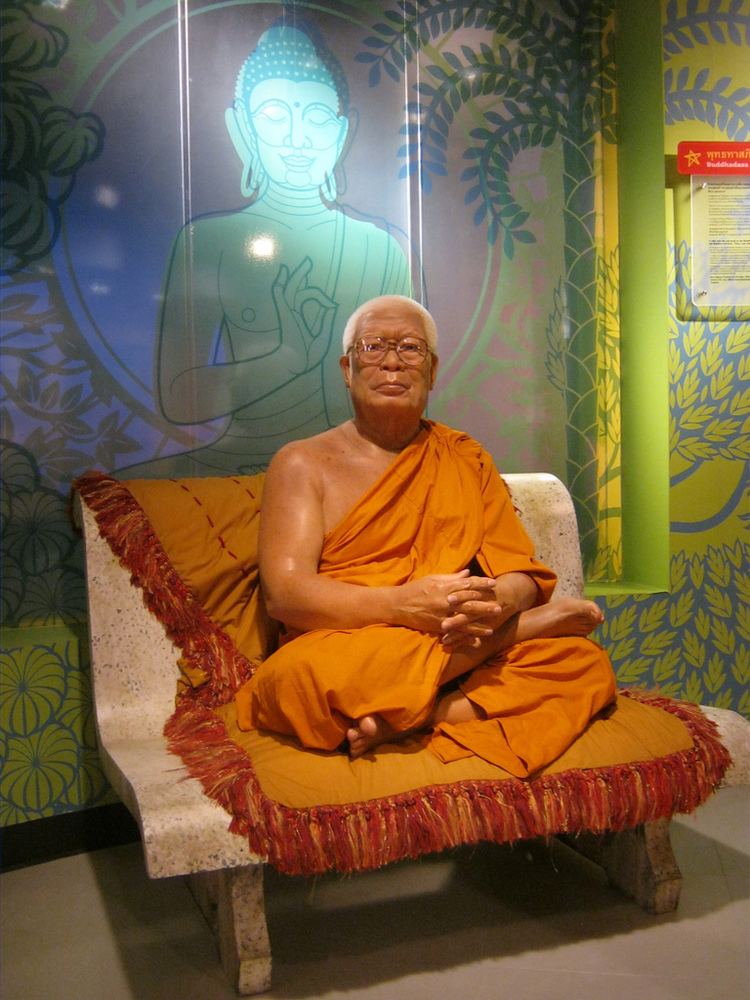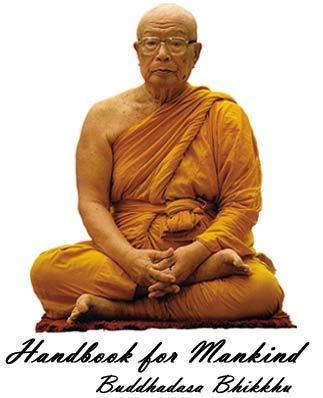Name Phra Dharmakosacarya Nationality Thai Dharma names Indapanno | Other names Buddhadasa Role Monk | |
 | ||
Born May 27, 1906Phumriang, Chaiya, Chaiya Province (now Surat Thani Province), Thailand ( 1906-05-27 ) Title Phra Khru Indapannacariya (1946)Phra Ariyanandamuni (1950)Phra Rajajayakavi (1957)Phra Debvisuddhimedhi (1971)Phra Dharmakosacarya (1987) Books Mindfulness with breathing Parents Sieng Panitch, Klaun Panitch | ||
Life and work of buddhadasa bhikkhu
Phra Dharmakosacarya (Nguam Indapañño) (Thai: พระธรรมโกศาจารย์ (เงื่อม อินฺทปญฺโญ); rtgs: Phra Thammakosachan (Ngueam Inthapanyo)), also known as Buddhadasa Bhikkhu (Thai: พุทธทาสภิกขุ; rtgs: Phutthathat Phikkhu, May 27, 1906 – May 25, 1993) was a famous and influential ascetic-philosopher of the 20th century. Known as an innovative reinterpreter of Buddhist doctrine and Thai folk beliefs, Buddhadasa fostered a reformation in conventional religious perceptions in his home country, Thailand, as well as abroad. Although he was formally a bhikkhu or "monk", having at the age of twenty years submitted to mandatory traditional religious controls, Buddhadasa developed a personal view that rejected specific religious identification and considered all faiths as principally one. His groundbreaking thought inspired such persons as the French schooled Pridi Banomyong, leader of the Siamese revolution of 1932, and a group of Thai social activists and artists of the XX century.
Contents
- Life and work of buddhadasa bhikkhu
- Luang phor buddhadasa bhikkhu
- Early years
- Belief in no religion
- Wat Thannamlai
- Works
- References

Luang phor buddhadasa bhikkhu
Early years

He was born Nguam Phanit (Thai: เงื่อม พานิช; rtgs: Ngueam Phanit) in 1906 in Ban Phumriang, Chaiya District, southern Thailand. His father, Sieng Phānit, was a shopkeeper of second generation Thai Chinese (Hokkien) ancestry and his mother, Klaun, was Thai. He renounced civilian life in 1926. Typical of young monks during the time, he traveled to the capital, Bangkok, for doctrinal training but found the wats there dirty, crowded, and, most troubling to him, the sangha corrupt, "preoccupied with prestige, position, and comfort with little interest in the highest ideals of Buddhism." As a result, he returned to his native rural district and occupied a forest tract near to his village. He named it Suan Mokkh from Thai สวน suan "garden" and Pali moksha "release, liberation". He strove for a simple, pristine practice in attempt to emulate Gautama Buddha's core teaching, "Do good, avoid bad, and purify the mind." He therefore avoided the customary ritualism and internal politics that dominated Siamese clerical life. His ability to explain complex philosophical and religious ideas in his native Southern Thai attracted many people to his wooded retreat.

However, Buddhadasa was skeptical of his fame; when reflecting on the busloads of visitors to Suan Mokkh he would say, "sometimes I think many of these people just stop here because they have to visit the bathroom."
Belief in "no religion"

From the earliest period of his religious studies, Buddhadasa utilized a comparative approach and sought to be able to explain "Buddhist's teachings through other thought systems such as Taoism, Hinduism, Confucianism, Jainism and Natural Science." Through such a methodology he came to adopt a religious world-view that rejected exclusionary religious identification. In his No Religion (1993) Buddhadasa famously remarked, "in advanced perspectives there is no religious identification whatsoever."

...those who have penetrated to the highest understanding will feel that the thing called 'religion' doesn't exist after all. There is no Buddhism; there is no Christianity; there is no Islam. How can they be the same or in conflict when they don't even exist?
Religious scholar D.K. Swearer has compared Buddhadasa to the early Indian philosopher Nagarjuna.
Wat Thannamlai
In 1932, Buddhadasa founded Suan Mokkh. His primary teaching mainly focused on the quiet awareness of one's breathing pattern called anapanasati. However, his personal practice was very much grounded in advanced research and interpretation of early Pali texts on the one hand and on his radical private experimentation on the other.
In later years, Buddhadasa's teachings attracted many international seekers to his hermitage. He held talks with leading scholars and clergy of various faiths. His aim in these discussions was to probe the similarities at the heart of each of the major world religions. Before his death in 1993, he established an International Dhamma Hermitage Center across the highway from his own retreat to aid in the teaching of Buddhism and other yogic practices to international students.
Works
Buddhadasa's works literally take up an entire room in the National Library of Thailand. The following are some of his well-known books in English translation.
